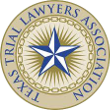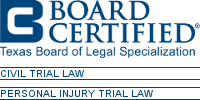No Publication
(Cite as: 1997 WL 819931 (Tex.App.-Hous. (1 Dist.)))
NOTICE: NOT DESIGNATED FOR PUBLICATION. UNDER TEX.R.APP.P. 47.7 UNPUBLISHED OPINIONS MAY NOT BE CITED AS AUTHORITY.
Court of Appeals of Texas, Houston (1st Dist.).
L. Joe SPEED, Appellant
v.
SEARS, ROEBUCK & CO., Appellee
No. 01-96-01135-CV.
Dec. 23, 1997.
On Appeal from the 127th District Court Harris County, Texas Trial Court, No. 94-00720.
OPINION
O’CONNOR, J.
*1 Joe Speed, the plaintiff, sued Sears Roebuck & Co. for negligence because he was hit in the head while Sears’ employees loaded a garden tractor into his truck. The jury found in favor of Sears, and the plaintiff appeals, arguing the trial court erred by not including a res ipsa loquitur instruction in the jury charge. We affirm.
Facts
On July 15, 1993, the plaintiff went to Sears to buy a garden tractor. The tractor, which weighed more than 600 pounds, was in a large crate, about the size of one and a half refrigerator boxes. Three Sears’ employees pushed the crate out on a pallet jack or dolly and moved it to within about six feet from the tailgate of the plaintiff’s truck. The plaintiff had covered the bed of the truck with a quilt, to protect it from scratches. Just as the men bent over to lift the crate, the plaintiff, who was standing four or five feet away, saw the wind blow the quilt completely over. The plaintiff asked the Sears’ employees to stop while he fixed the quilt. He testified they all stood up. He then went over to the truck to fix the quilt. As he was leaning over, he was hit hard behind the left ear. He did not see or hear anything before he was hit.
Stunned, the plaintiff fell to his knees across the tailgate and felt his head throbbing. He did not think he lost consciousness. He testified he thought he saw the tractor out of the crate and lying upside down against the truck. However, on cross-examination, he stated he was not sure whether he really saw it lying there. He said only a few seconds elapsed between the time when the employees set the crate down and he was hit. He went inside Sears to talk to a manager and spoke with Melissa Quinn.
Quinn testified that the plaintiff came into the store and said he had done something “stupid” and got in the way of the crate as it was being pushed onto the truck. He was concerned that the truck was scratched, and he wanted to know if Sears would pay for the repairs to the truck. Quinn testified the plaintiff “was talking normal, like any other customer, except for that he was bumped on his head.” Quinn told him she would have the scratches fixed. She asked him if he was all right, if he wanted an ambulance. He responded that he was fine, that he was just worried about the truck.
When the plaintiff and Quinn went out to the truck, the tractor was loaded in the truck and it was in the box. Quinn was concerned about the plaintiff driving, but he lived nearby and felt he would be fine driving home. Quinn said she saw the piece of wood that the plaintiff said hit him on the back of the head. Quinn said the Sears’ employees would have had exclusive control over the crate as it was being loaded. She also stated the employees would have been negligent had they dropped the tractor on the plaintiff’s head during loading. The three employees who loaded the truck could not be found to testify.
When the plaintiff got home, he spoke with one of his neighbors, Dorothy Deaton. A little bit later, Deaton’s husband, Steve Lichfield, joined them. Deaton and Lichfield testified the plaintiff told them he was hit in the head with a piece of wood as he helped load the tractor at Sears. Deaton said the plaintiff told her the piece of wood exploded from the box. Deaton testified she did not see a quilt in the back of the plaintiff’s truck. Lichfield did not remember seeing any cardboard, wood, or the quilt in the back of the truck. Lichfield testified that he and his wife helped the plaintiff unloaded the lawn mower by lifting the back wheels off the truck and down to the driveway, and then lifting the front wheels out of the truck and down. He estimated it was about a one-foot drop. Deaton testified that she and her husband unloaded the truck while the plaintiff laid down against the garage. Once the tractor was unloaded, the plaintiff noticed a dent on the hood but admitted he did not know if it was there before the accident.
*2 The next day the plaintiff went to North Carolina for a business meeting. He felt nauseated, dizzy, and cold, and eventually was taken to a hospital. When he returned to Houston, he went to a neurologist. Since his accident, the plaintiff has been fired from two jobs. At the time of the trial, he was selling computer software systems and was concerned he would not be able to meet the company’s sales expectations. He and his wife run a concession stand part-time. He testified that now he has trouble making sales and that he sometimes “shuts down” when he is confused. He also said he has trouble remembering appointments. He was very involved in sculpting, but since the accident he does very little of his own artwork. His brother, his wife, and one of his neighbors testified the plaintiff has changed since the accident.
The trial court refused to submit a res ipsa loquitur instruction to the jury. It also refused the plaintiff’s request that the negligence question only ask about Sears’ negligence, without reference to the plaintiff’s negligence. The jury found the plaintiff’s negligence alone caused the accident and that Sears was not negligent.
Analysis
The plaintiff appeals on one point of error, claiming the trial court erred in refusing to submit to the jury an instruction on res ipsa loquitur.
Standard of Review
A trial court must submit explanatory instructions that are necessary to enable the jury to render a verdict. Tex.R.Civ.P. 277 (1997); Magro v. Ragsdale Bros., Inc., 721 S.W.2d 832, 836 (Tex.1986). The trial court has wide discretion in deciding what instructions are proper to submit to the jury. Mobil Chem. Co. v.. Bell, 517 S.W.2d 245, 256 (Tex.1974); Harris County v. Demny, 886 S.W.2d 330, 332 (Tex.App.–Houston [1st Dist.] 1994, writ denied). A trial court’s refusal to submit requested instructions will not be reversed on appeal unless the court abused its discretion. Magro, 721 S.W.2d at 836; Demny, 886 S.W.2d at 332. A trial court abuses its discretion when it acts without reference to any guiding principle. Texas Dep’t of Human Servs. v. E.B., 802 S.W.2d 647, 649 (Tex.1990). Error in the charge is reversible only if harmful, that is, if it caused or was reasonably calculated to cause and probably did cause, the rendition of an improper judgment. Demny, 886 S.W.2d at 332.
Res Ipsa Loquitur Instruction
Res ipsa loquitur, meaning “the thing speaks for itself,” is used in certain limited types of cases when the circumstances surrounding the accident constitute sufficient evidence of the defendant’s negligence to support such a finding. Haddock v. Arnspiger, 793 S.W.2d 948, 950 (Tex.1990). To find a defendant negligent under the doctrine of res ipsa loquitur, a plaintiff must establish (1) the accident was the type of accident that does not ordinarily occur in the absence of negligence, and (2) the injury-causing instrument was under the management and control of the defendant. Bell, 517 S.W.2d at 251; Westerlund v. Naaman, 833 S.W.2d 725, 727 (Tex.App.–Houston [1st Dist.] 1992, no writ.). The first factor, “type of accident,” is necessary to support the inference of negligence and the second factor, “control,” is necessary to support the inference that the defendant was the negligent party. Bell, 517 S.W.2d at 251. The possibilities of other causes do not have to be completely eliminated, but their likelihood must be so reduced that the jury can reasonably find by a preponderance of the evidence that the negligence, if any, was the fault of the defendant. Id.
*3 To rely on the res ipsa doctrine, a plaintiff must produce evidence to support the “type of accident” and “control” factors. Bell, 517 S.W.2d at 252. With regards to res ipsa loquitur instructions, the Texas Supreme Court has held that, in the majority of negligence cases, a trial court should not submit the sub-issues of “type of accident” and “control,” but should submit only the ultimate negligence issue. Id. If a trial court believes there is evidence supporting both sub-issues, it should ask the jury whether the defendant was negligent. Id. Submission of the sub-issues is generally unnecessary and may confuse the jury or divert its attention from the real issue. Id.
Based on this Court’s decision in Texas Pipe Bending Co. v. Gibbs, 580 S.W.2d 41 (Tex.App.–Houston [1st Dist.] 1979, writ ref’d n.r.e.), the plaintiff argues that the trial court was required to submit the res ipsa instruction. We disagree. In Gibbs, the plaintiff was standing on top of pipe that had been loaded onto his truck. Id. at 43. Gibbs bent over to secure some chains, was struck in the head, and was knocked off his truck. Id. He sued, alleging he was struck with a gin pole due to the negligence of the defendant’s employee, who was operating a gin pole truck. Id. at 45. At trial, a witness testified that he spoke to the employee, who said a gin pole got loose and knocked Gibbs off the truck. Id. at 43-44. A res ipsa loquitur instruction was submitted to the jury, and the jury found for Gibbs. Id. at 44. The defendant appealed, claiming the instruction was inappropriate. Id. We held there was no “error in submitting an instruction” on res ipsa because the trial court could reasonably have determined there was evidence to support the two factors of “type of accident” and “control.” Id. at 46.
Gibbs differs from this case in significant respects. First, in Gibbs, there was no evidence that the plaintiff was negligent and his negligence caused the injury, as there was in this case. Second, in Gibbs, we found the trial court could reasonably have determined there was evidence to support the two factors of “type of accident” and “control”; in contrast, in this case, we do not find support for either of the two factors. In addition, even in Gibbs, we did not hold a res ipsa loquitur instruction was required; we merely held that, based on that record, the submission of the res ipsa instruction was reasonable. Id.
In this case, the parties disputed how the accident happened. Sears argued this accident could have occurred in two ways: (1) the Sears’ employees negligently dropped the crate, as the plaintiff claimed; or (2) the plaintiff was negligent by reaching into the bed of the truck as the Sears’ employees were sliding the crate into the truck. The plaintiff’s expert witness stated the injury could have been caused by the crate dropping or sliding into the plaintiff. Quinn testified the plaintiff told her he had been stupid and was hit in the head as the crate was slid into the truck. The plaintiff’s neighbors said he told them he was hit in the head with a piece of wood. The only testimony that the tractor was dropped onto his head was from the plaintiff. However, he did not see what hit him because his back was turned and he was looking at the quilt. He also was not sure he saw the tractor out of the crate and leaning against the truck after he was hit.
*4 The plaintiff did not establish that this accident was most likely caused by Sears’ negligence. The jury, having before it at least two possible scenarios of how the accident happened, decided the plaintiff’s negligence caused his injury and that Sears was not negligent. A separate res ipsa loquitur instruction was not necessary in this case. The trial court asked if Sears’ negligence caused the plaintiff’s injury, and the jury found Sears was not the cause of the accident.
We overrule point of error one and affirm the trial court’s judgment.
Justices MIRABAL and NUCHIA also sitting.
END OF DOCUMENT








